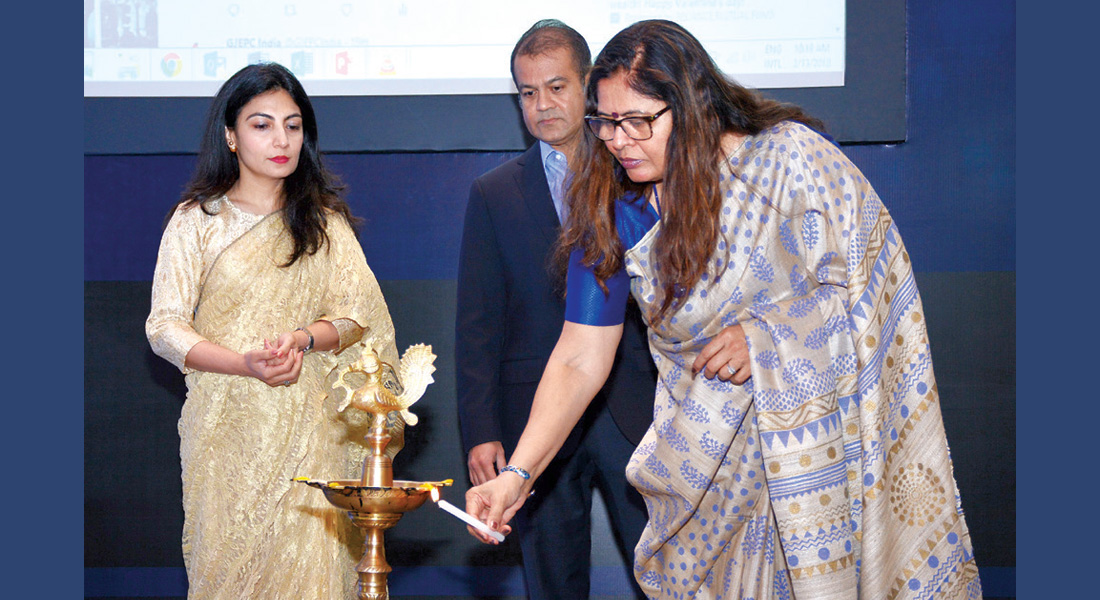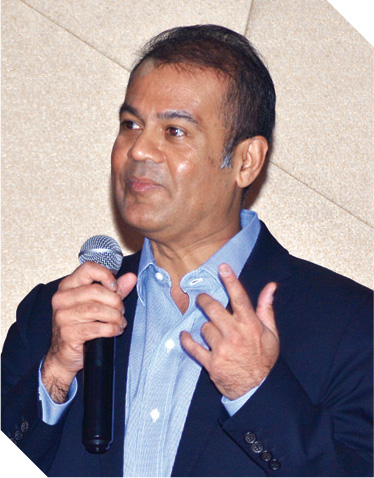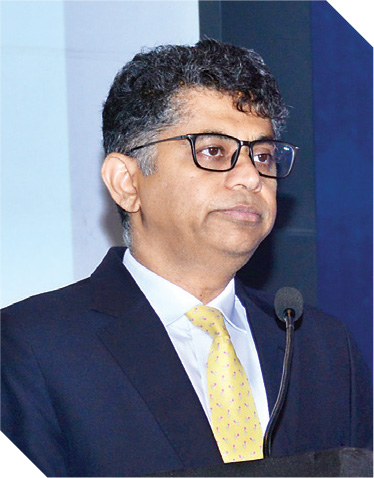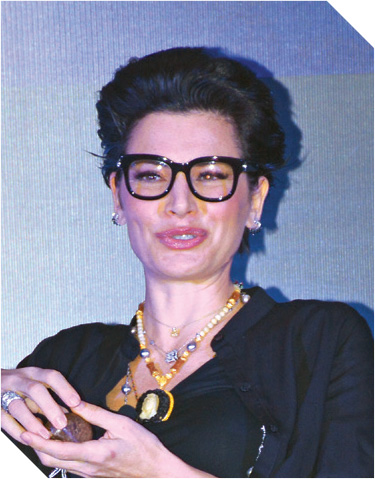The Gems and Jewellery Export Promotion Council (GJEPC) organised Design Inspirations 2018, a two-day knowledge forum on upcoming jewellery trends. Various renowned speakers focused on understanding what creates jewellery trends in the world’s major jewellery consuming markets like India, USA and Europe. The theme for Design Inspirations 2018 ‘Concept To Creation-Optimising Efficiency’, concentrated on evolution and life cycle of jewellery design from conceptual stage to final product development in today’s digital age.
Commenting on the event, GJEPC chairman Pramod Agarwal said, “Designing as per the latest trends and as per the market requirement is an area the Indian industry needs to focus more if we want to expand our hold in the global market. Apart from setting up new institutes at identified gem and jewellery clusters, the Council will further ramp up its existing gem and jewellery institutes by introducing new courses and facilities to meet our goal.”
Opening the seminar on day one, GJEPC vice chairman Colin Shah, noted, “Design Inspirations aims to ignite the young minds every year with eminent speakers from across the globe sharing their viewpoints on the Indian and international trends. Consumers are always on a lookout for something new and trendy which adds to the pressure of innovating quickly. In the sixth year of Design Inspirations, we would like to continue to inspire the gems and jewellery industry to focus on converting creative design concepts into saleable jewellery with speed for consumer buying purpose.”
Milan Chokshi, convener, Promotions, Marketing & Business Development sub-committee, GJEPC, concluded the day two session by thanking every speaker individually for participating in the seminar and providing meaningful insights and directions. “India is omnipresent in the world of gems and jewellery, and consequently the largest stakeholder in every way. As the leader, it’s essential that we extend our lead over the others by constantly striving to improve in every area. Definitely, Design Inspirations is a move in that direction, and I am sure this would help the industry to move in sync, if not ahead of the industry.”
The list of speakers this year included Alexandra Mor, haute joaillerie creative director and designer of the eponymous brand in the USA; Paola De Luca, founder, The Futurist Ltd; Roza Topolnicka, branding partner, Swarovski Gemstones; Abhishek Rastogi, head of design, Tanishq; Farah Khan, founder, Farah Khan Fine Jewellery; Aakrosh Sharma, Caratlane; John Varghese, associate partner at IBM India; Siddharth Kasliwal, creative head and heir of The Gem Palace, Payal Singhal, fashion designer, Shehzad Zaveri, owner and creative head, Minawala Jewellers; Roopa Vohra, jewellery designer and many more.
Here’s what the experts had to say:
He touched upon consumer behaviour and highlighted who is the consumer of the future. India has the highest fascination for jewellery among major markets of the world, with unmatched capabilities and strengths. The gem and jewellery sector contributes 7% to India’s GDP, and employs about 5 million workforce. India is the world’s second largest gold and third largest diamond market. However, the jewellery industry is facing headwinds, globally as well as in India as there is declining global demand for jewellery and declining share of wallet of jewellery.
The key fulcrum to overcome these challenges lies in the design itself. The market of the future is going to be based on the foundation of values, influence and personalisation.
Hundekari pointed out that millennials are the largest living generation, with 86% of them living in emerging markets like China, India and Brazil; 80% of millennials want to work for companies that care about their environmental impact and they are most likely to pay more for responsibly made products. They are highly educated, career-driven and politically progressive. They develop strong brand loyalty when presented with quality products and when they are actively engaged by brands.
Further outlining some common characteristics of millennials, he said: “They are true global citizens, who live in a borderless environment with a global network of friends. They are digital natives and are value driven, always in search of meaning and authenticity. They belong to the ‘Me-now” culture and believe in daily social posts and selfies, which, in turn, reflects their interest in personalised products. They value memories over material and have caused a shift in goods to service, but this has created high expectations for all experiences.
India is on track to become the youngest country in the world by 2020, with a median age of 29. More than 200 millennials, those born after 1982, account for a third of India’s population and 46% of its workforce. They are also more likely to view fine jewellery as an adornment and accessory rather than an investment that is reserved only for special occasions — that is indeed a fundamental shift in approach.
AT Kearney recently surveyed more than 7,000 consumers across seven countries to examine demographic, economic, and technological trends, and studied the primary generation who will be key consumers in 2027. For years, the key assumptions on which jewellery sales were based were seduction, affluence and scale. But from now on markets will thrive on three principles: Trust (values), Influence (family, friends) and highest level of personalisation.
So how does one engage today’s consumer? A direct approach to consumers is important; invest big in consumer intimacy by tailoring to her or his needs; redefine your view of consumer cohorts, for example, the jewellery industry should move beyond the emotion of love as a sales driver. Think respect or friendship as well, he suggested. Can we also see jewellery as a functional product? he asked; deliver customised solutions in pockets of scale; adjust marketing budgets to reflect the new social media realities and allocate some revenue for digital marketing; engage micro influencers to build authentic communities, as influencers with less than 1000 followers have a like rate of 8%, so see quality not quantity; build trust via sharper value propositions; and balance resources and efforts and change commercial and revenue models.
Abhishek Rastogi
Head of design, Tanishq
Rastogi noted that it was imperative to create rather than follow trends. The three big influences for the Indian jewellery industry, according to him, are Bollywood, royal heirlooms and handcrafted products. It is crucial for designers to observe and interpret trends. Customising collections to suit a particular segment of customers from a region was important as well. He urged young designers to understand the purpose of a good design combined with the business aspect for creating and establishing trends.
Alexandra Mor
Haute jewellery designer
Alexandra emphasised on the importance of developing the brand DNA for it to become successful. Narrating an engaging story through your jewels — the story should come from within, it should reflect your beliefs and not be fake. She stated, “I have so far done what I felt was right. You have to think out of the box and not follow rules, and keep your mind open to create trends.
She spoke at length about how her trip to Bali, Indonesia, inspired her to come up with the eco-conscious line that uses tagua seeds and incorporates traditional, handcrafted Balinese workmanship and heritage. The tagua seed is an alternative to elephant ivory, adding that part of the sales proceeds of the collection will be donated to an elephant organisation. “In just one year, a single tagua palm can produce as much ivory as an average African elephant can in its lifetime and can offer a real solution to help stop the senseless killing of beautiful and soulful animals.”
The limited, one-of-a-kind edition comes together with the harmonious use of artisanal, hand-carved tagua seeds, black and red Balinese wood, Sumatran pearls and 22-karat yellow gold work, gemstones and diamond melees.
Alexandra Mor mentioned that the tagua seed takes the character of ivory. “We dye it, and its colours are magnificent and when polished it looks like a gemstone. It is a botanical alternative to save the future of the planet. I am an ambassador of a bigger movement. Through this collection, I will bring awareness of the tragic reality of species on the brink of extinction, the preservation of native forests and the people and culture that depend on this animal’s survival.”
Roza Topolnicka
Head of creative and retail marketing, Swarovski Gems
She emphasised that mega trends are based on social, economic, and political environment or technical changes and are slow to form. Brands today are shifting focus to target the younger generation who believe in adorning jewellery rather than locking it away. It is imperative to understand the consumer and cater to designs in line with their needs and preferences. Jewellery is viewed as an adornment rather than an investment. Revolutionary charms, eccentric ear wear and contemporary engagement rings are the trends to look out for this year. She rounded off by saying that millennials will be key drivers of India’s growth story.
John Varghese
Associate partner, IBM India
“India is at the cusp of a first of its kind digital disruption. With the emergence of the digital economy, brands have evolved in the last five years to adapt to new business models. Consumers spend a majority of their time in the digital world giving designers an opportunity to leverage this platform to enhance visibility and interactivity, adding, “The digital economy will be a trillion dollar economy by 2025.” He went on to exhort the jewellery industry to pay heed to this and align strategies to include the digital world into their plans. Although the physical world will never disappear, what will enable it is linking itself to the digital world to target consumers, he said.
Paola De Luca
Founder of The Futurist
“Design Inspirations is a platform for forecasting the jewellery trends which is essential knowledge for designers to enable them to plan with methodology and system. Understanding the consumer’s culture, taste and preferences, translates into knowing what he or she will buy and how. Trends are not to be confused with fashion or fads,” Paola clarified at the outset. “Rather it is an understanding of social changes. Of seeing how these will affect what people wear, buy, and spend on.”
Tanmay Shah
Head of Innovations, Imaginarium
He stressed on the concept of inventory-less retail because technology allows you to do that. He stated that the role of a designer is shifting fast. Designing is an inclusive process these days because of the growing demand for customisation. Co-creation is the name of the game. He also predicted that trends will shrink to each individual – there will be as many designs as there are people in the world.
Aakrosh Sharma
Caratlane
He focused on merchandising, and noted that the designer has to double up as a merchandiser too. And the respective characteristics of both had to be kept in mind when creating designs for a particular market. While designing was all about creative aspects and style and form, merchandising was about the business aspects.
Shehzad Zaveri
Founder and designer, Minawala Jewellers
He spoke about the impact of social media; the postdigital consumer; the digital modernist; the retro futurist; and the millennials, who were the biggest segment of bridal jewellery buyers, he said. But Zaveri also noted that the “Mother of Millennials” segment was also significant when it came to purchasing wedding jewellery. Today’s mother of the bride or groom wants to be as well turned out as anyone else. He also emphasised the impact of Bollywood and royalty on jewellery trends.
Dipendra Baoni
Founder, Lemon Designs
Baoni illustrated his point through a case study which his design studio had developed. The challenge was to create a 360-degree brand experience for a tea company, a family of master blenders, who were reduced to being merely B2B traders. Baoni provided an in-depth insight into the entire process — from working on the tea company’s name and logo to the packaging. What came through was the meticulous emphasis on detail, the intricate planning of every aspect to the ultimate offering to the consumer by putting the end product on the shelves. Baoni underlined the need for going into every detail in an in-depth manner and the importance of creative communication with the customer.
She spoke about the ‘Modern Day Interpretation of Art & Architecture’, and informed the audience about her fascination for thewa craft, that fuses gold and glass.
Roopa Vohra
Founder of Roopa Vohra House of Design
He introduced the audience to his company’s Matrix 9.0, a CAD software developed by Cascadestar and already widely used. Sanghvi gave a live demonstration of its use.
Siddharth Sanghvi
Cascadestar
Farah Khan
Founder and creative head, Farah Khan Fine Jewellery
She spoke about the how and why of branding and gave a glimpse of how the greatest brands — jewellery and otherwise — develop and use signatures across their products, thus securing immediate recall. She said that only good designs were not enough; branding is essential to be able to stand out in the crowd. She warned that the competition for jewellers was not merely from other jewellers down the road, but from other luxury products as well from all over the globe — so easy had it become to learn about what was available through the digital media.
Panel Discussion
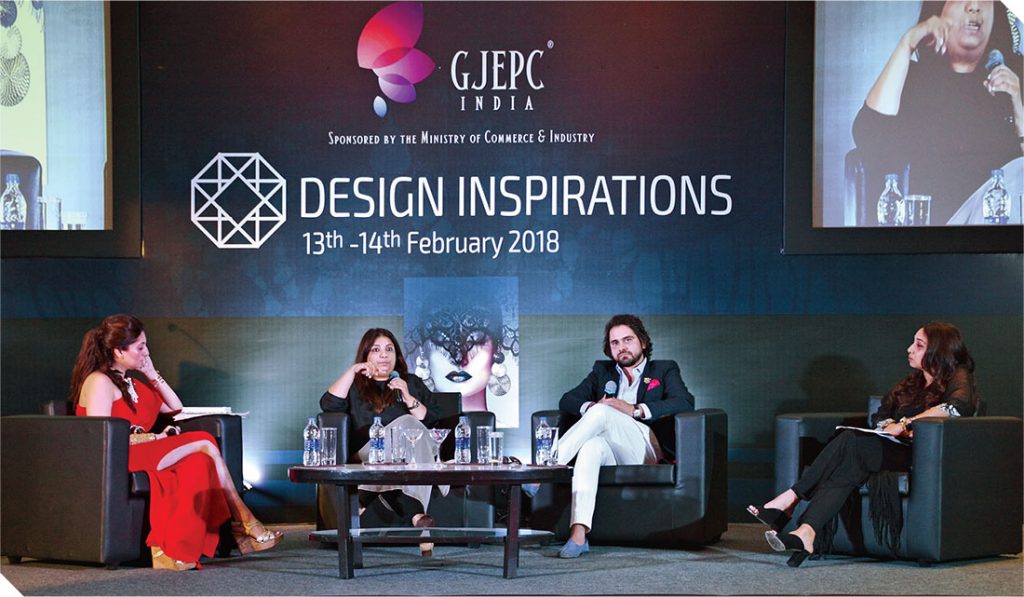
Siddharth Kasliwal, creative head and heir of The Gem Palace, Gauri Tandon, co-partner, Isharya and fashion designer Payal Singhal, moderated by Nisha Jhangiani of Pearl Academy.
Each of the three panellists spoke about staying true to their brand’s DNA and the art of staying relevant in today’s times by communicating with their consumers and understanding their needs.
Payal Singhal, who founded her fashion label in 1999, realised way back that there was a dearth of Indian contemporary clothes and that impelled her to start her brand. She said, “It is important to go with one’s instinct and then tie up the various aspects, including quality product, story, social media, language that you use to communicate with the client. We must listen to our customers, adapt, and follow new mediums of engagement. We cannot work in isolation and be oblivious to the markets we cater to.” She advised that one doesn’t have to be visible on every digital platform. “Choose the medium that works for you.”
Siddharth Kasliwal noted that the USP of The Gem Palace has always been the thrust on quality and not quantity.
“Each piece is handcrafted and it takes us a couple of months to finish the final product — it’s a painstaking process. Our approach has always been to follow the ‘slow fashion’ movement where less is more for us. We do not follow trends. And I am trying to continue my late father Munnu Kasliwal’s legacy,” he said, adding, “Since we are delivering a luxury product, we often involve our customers in the creation process, who fortunately, have the luxury of time, to wait for the piece to get ready.”
Gauri Tandon spoke about Isharya being an India-inspired brand, but for the modern woman. “We are pioneers in the field and veer towards luxury fashion jewellery by keeping an eye on trends, and innovating all the time.” Isharya found its fame and growth in California, Gauri stated, adding, “Women there don’t wear jewellery to show their wealth. It is more about exhibiting their fashion sense. When we launched here, we didn’t think we’d sell in India, but fortunately we did as aesthetic sensibilities have become more global.”

